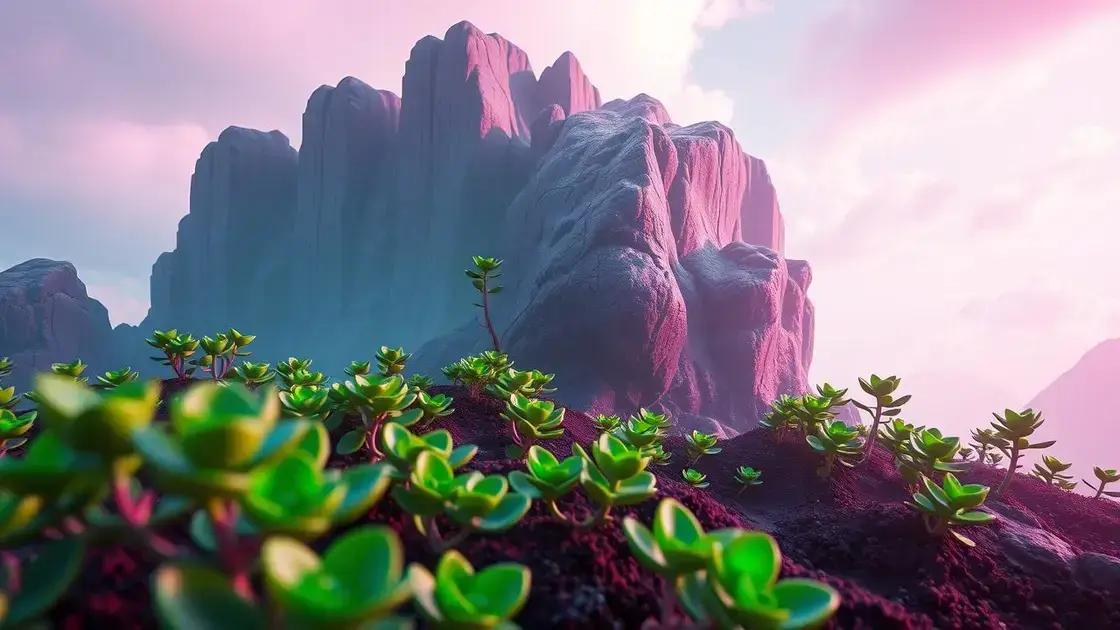How to Care a Jade Plant: 7 Essential Tips for Thriving Growth
How to care a jade plant can seem mysterious to many plant lovers. With the right information and techniques, your jade plant can flourish beautifully and become a stunning centerpiece in your home. The key lies in understanding its needs and how to provide them effectively. This post will explore essential tips for keeping your jade plant healthy and thriving.
Table of Contents
ToggleEssential watering schedule for jade plants
How to care a jade plant effectively begins with an essential watering schedule tailored to its needs. Proper watering is crucial for maintaining a healthy jade plant as overwatering or underwatering can lead to root rot or stunted growth.
Key watering tips for jade plants
- Check moisture levels: Always check the soil moisture before watering. Stick your finger about an inch into the soil; if it feels dry, it’s time to water.
- Watering frequency: During the growing season (spring and summer), water once every 1-2 weeks, allowing the soil to dry out between waterings. In fall and winter, reduce watering to once every 3-4 weeks.
- Use proper drainage: Ensure your pot has drainage holes to allow excess water to escape, preventing root rot.
Signs of underwatering
Keep an eye out for signs that your jade plant may need water:
- Wrinkled or shriveled leaves
- Leaves dropping from the plant
Watering methods
There are different ways to water a jade plant effectively:
- Bottom watering: Fill a tray with water and place the pot on top. The roots will absorb water from the bottom up.
- Soak and dry: Water until you see excess liquid draining from the holes. Let the plant sit in the water for about 10 minutes, then drain excess.
Adjusting for environment
Different factors can impact your watering schedule, including:
- Humidity: Jade plants thrive in low humidity, so they typically need less frequent watering.
- Temperature: Warmer temperatures can lead to faster evaporation, requiring more frequent watering.
For those interested in expanding their gardening skills, exploring indoor gardening techniques can provide valuable insights on plant care.
Common questions about jade plant watering
1. How often should I check my jade plant’s moisture?
It’s best to check the soil about once a week to ensure it’s not too wet or too dry.
2. Can I use tap water for my jade plant?
Yes, but let the water sit out for 24 hours to allow chlorine to dissipate before watering.
3. What is the best time of day to water jade plants?
Water in the morning to allow any excess moisture to evaporate during the day, preventing fungal growth.
By following this essential watering schedule, your jade plant will thrive and exhibit its lovely features for years to come.
Ideal soil requirements for healthy jade plants

How to care a jade plant effectively hinges on understanding its ideal soil requirements. The right soil can promote growth and longevity for these beautiful succulents, ensuring they thrive indoors and outdoors alike.
Key components of jade plant soil
- Well-draining material: Jade plants require soil that drains well to prevent water accumulation and root rot.
- Soil texture: A mixture that combines coarse sand, perlite, or pumice creates the right texture, allowing air circulation and moisture retention.
- Organic matter: Adding organic matter like compost improves nutrient content but should be kept minimal to avoid water retention.
Recommended soil mix for jade plants
A suitable recipe for jade plant soil includes:
- 50% potting soil
- 25% coarse sand
- 25% perlite or pumice
Common soil types and their benefits
Exploring various soil types can help you choose the best fit for your jade plant:
| Soil Type | Benefits |
|---|---|
| Commercial cactus mix | Designed specifically for succulents, offers great drainage. |
| DIY succulent mix | Allows for customization based on your environment and needs. |
| Organic potting soil | Good for nurturing plants but should be mixed with drainage materials. |
Signs of improper soil conditions
Monitoring your jade plant for these signs can help you adjust soil conditions accordingly:
- Yellowing leaves may indicate excess moisture or poor drainage.
- Stunted growth can result from compacted soil lacking air circulation.
- Root rot can be identified by a foul smell when checking the roots.
For further insights and expert tips, consider exploring indoor gardening techniques that might enhance your plant care approach.
Common questions about jade plant soil
1. Can I use regular garden soil for jade plants?
It’s not recommended since garden soil often retains too much moisture.
2. How often should I repot my jade plant?
Repotting every 2-3 years is ideal to refresh the soil and provide ample space for growth.
3. Is fertilizing necessary for jade plants?
While it’s not essential, light fertilizing during the growing season can support healthy growth.
Understanding and applying these ideal soil requirements will ensure your jade plant remains healthy and vibrant, bringing joy to your space.
Best sunlight exposure for jade plant growth
How to care a jade plant effectively includes understanding the best sunlight exposure for optimal growth. Jade plants thrive in specific lighting conditions, which significantly impact their health and vitality.
Optimal light conditions for jade plants
- Bright, indirect sunlight is ideal for jade plants. This type of light simulates their natural habitat, providing warmth without harshness.
- Direct sunlight exposure can lead to sunburned leaves, so it’s vital to monitor light intensity and duration.
- Inadequate light can cause leggy growth, leading to a less attractive appearance and weaker plants.
How to position your jade plant for optimal light
- Place your jade plant near a south or west-facing window for maximum light exposure.
- Rotate the plant every couple of weeks to ensure even light distribution on all sides.
- If using artificial lights, choose full-spectrum grow lights to simulate natural sunlight.
Signs your jade plant is getting too much or too little sunlight
Monitoring your plant’s health can help you adjust lighting as needed:
- Too much sunlight may result in:
- Brown or crispy leaf edges
- General leaf wilting
- Too little sunlight might show up as:
- Leaves becoming pale or yellow
- Stretched or leggy growth
Benefits of proper sunlight exposure
Providing the right amount of light has many advantages:
- Enhanced growth and vibrancy of foliage.
- Increased resilience against pests and diseases.
- Higher chances of blooming if conditions are optimal.
For more insights on effective plant care, consider exploring indoor gardening techniques that can further improve your gardening skills.
Common questions about jade plant sunlight needs
1. How many hours of sunlight does a jade plant need?
Ideally, jade plants need about 4 to 6 hours of bright light per day.
2. Can I grow jade plants in low light?
While they can survive in low light, jade plants will not thrive and may become leggy.
3. What should I do if my jade plant is stretching towards the light?
This indicates it’s not getting enough light. Move it to a brighter location and rotate it occasionally.
By understanding the best sunlight exposure, your jade plant will flourish and add beauty to your indoor space.
In conclusion
Caring for a jade plant requires understanding its specific needs, including an essential watering schedule, ideal soil requirements, and proper sunlight exposure. By following the guidelines outlined in this post, you can ensure your jade plant thrives and adds beauty to your indoor space. Remember that each plant is unique, and regular monitoring will help you make adjustments that suit your specific environment. For further insights, check out these tips on enhancing your indoor garden and take your plant care to the next level.

